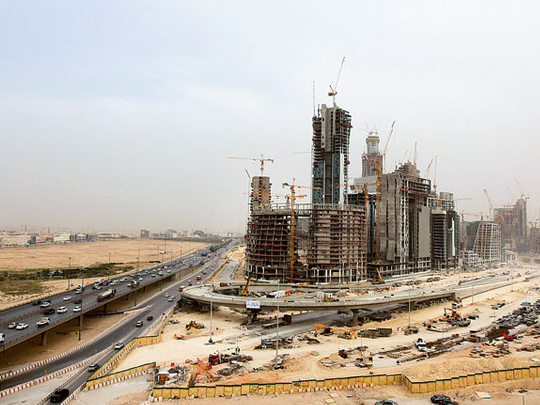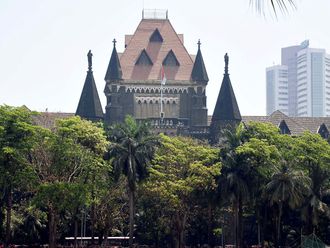
DUBAI: Until a few months ago, any suggestion of a potential economic slowdown in GCC region could have been scorned by even the most seasoned economists. But the rapid pace at which oil price are falling have prompted some to reconsider their regional outlook.
Oil prices have declined sharply since June on concerns about weaker global growth and increased supply. The Opec reference oil price has declined nearly 23 per cent since its June peak, reaching $85 per barrel.
“Despite progress on economic diversification in the GCC over the last decade, regional budgets remain highly reliant on oil revenues and are thus vulnerable to sustained changes in oil prices,” said Khatija Haque, Head of MENA Research at Emirates NBD.
Since the economic downturn in 2009, non-hydrocarbon real GDP growth has been sustained at around 6 per cent, driven by higher public spending and stronger private sector activity. According Institute of International Finance (IIF) the overall real GDP growth for GCC is projected to be 4.4 per cent this year, largely on account of restrained oil production in the face of ample global supplies and tepid growth in demand.
“Although oil prices have dropped below $100/b, GCC countries are still running large current account and fiscal surpluses and accumulating foreign assets on an unprecedented scale,” said George Abed Senior Counselor and Director of IIF for Africa/Middle East.
According to Emirates NBD’s research at the $100 per barrel consensus oil price forecast for next year, Saudi Arabia is expected to its first budget deficit since 2009 as the country’s break-even oil price for 2015 is estimated at $103.
Economists say Saudi Arabia would have no problems financing a budget deficit for several years, given its substantial levels of accumulated reserves and low levels of sovereign debt. However, there is little scope for the Kingdom to boost expenditure from current levels.
“While oil fiscal break even prices have increased notably, we believe it would take a marked and sustained drop in oil prices to below the regional fiscal break even oil price of $85/barrel for a revision to near- term GCC spending plans. As in the 2008-09 crisis, Saudi Arabia could draw on its large war chest to finance deficits and support the non-oil economy, which we expect to remain resilient across the region,” said Jean-Michel Saliba, an economist with Bank of America Merrill Lynch.
Bahrain and Oman have the highest break-even oil prices in the GCC at $138 and $118pb respectively. These countries are expected to finance budget shortfalls from savings and transfers from other GCC states.
Even if oil prices did average $80 in 2015, the UAE would run a balanced budget (with the estimated 2015 break-even price of $78), while Kuwait would still post a surplus (break-even estimated at $65pb next year).
High levels of accumulated savings in the GCC mean that the short-term implications of lower oil prices on budget spending are less of a concern. With the combined current account surplus projected at $305 billion in 2014 and $238 billion in 2015, net foreign assets could rise to $2.4 trillion by end-2015, equivalent to 120 per cent of aggregate GDP.
In the context of the decline in oil prices higher budgeted expenditure, according to IIF estimates, the consolidated fiscal surplus will narrow gradually to 2.8 per cent of GDP in 2015. There are ample resources to fund continued growth in public spending (albeit at a somewhat declining rate), reinforcing business confidence and supporting strong private sector activity.
There is a general consensus that risks to the outlook for the GCC economies are generally well contained. Regional conflicts and rising geopolitical risks, despite their proximity, are unlikely to adversely affect GCC economic performance. At the macro level, fiscal strains could begin to arise over the medium term if oil prices continue to slide to, say, below $80 per barrel, while government spending growth remains unrestrained.












